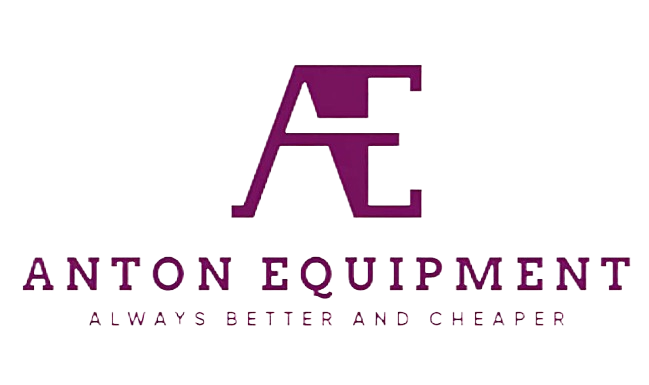News
How to Choose the Right Earth Auger for Your Landscaping Projects
Types of Earth Augers for Landscaping Projects
Hydraulic vs. Mechanical Earth Augers
Hydraulic and mechanical earth augers are pivotal in completing landscaping projects, each offering unique benefits. Hydraulic earth augers are powered by hydraulic systems, offering increased power and efficiency, making them ideal for large-scale projects requiring strength, like installing utility poles or planting trees in tough terrain. In contrast, mechanical earth augers are simpler devices driven by gears and levers, appreciated for their ease of use and lower maintenance needs. They are typically favored for smaller projects like garden fencing or basic landscaping tasks. Studies affirm that hydraulic augers tend to exert more power, enhancing efficiency and depth in challenging soils, while mechanical augers are perfect for lighter, more precise tasks due to their simplicity and cost-effectiveness.
Skid Steer and Mini Excavator Attachments
Earth augers can be seamlessly integrated as attachments for skid steers and mini excavators, expanding their operational versatility. The use of skid steer attachments and mini excavator attachments with earth augers allows for increased maneuverability in confined spaces and complex landscaping environments. These machines enable swift and precise hole digging, crucial for projects like retaining walls or planting rows of shrubs. Environmentally diverse landscapes benefit particularly from the wide range of available attachment sizes and styles, empowering operators to tailor their equipment to specific tasks. Expert opinions reveal that using augers with these attachments significantly enhances landscaping efficiency by reducing manual labor and completing projects more swiftly compared to traditional methods.
Evaluating Soil Type and Project Requirements
Matching Auger to Soil Conditions (Rocky, Clay, Loam)
Understanding the soil types—rocky, clay, and loam—is crucial for selecting the right auger and its bit. Rocky soils, dense with stones, require augers equipped with durable bits that can withstand impact and dislodge rocks effectively. Clay soils, while less abrasive, are sticky and dense, necessitating bits designed to minimize clogging and maximize penetration. Loam, a balanced mixture of sand, silt, and clay, is generally easier to drill but still demands the appropriate bit to ensure seamless operation. Before starting a landscaping project, it's advisable to test soil conditions through a simple field analysis or professional soil test. Experts recommend using specialized auger bits, like spiral, coring, or flat ones, for specific soil types to enhance efficiency and ensure optimal results. This targeted approach accelerates the process and extends the life of the attachment.
Determining Hole Depth and Diameter Needs
Assessing hole depth and diameter is a critical aspect of landscaping projects that ensures plants thrive in their new environment. Different plants and designs require unique specifications; for instance, trees and larger shrubs often need deeper and wider holes to accommodate root systems and provide stability. Conversely, flowers and smaller plants typically need shallower indentations. To determine hole specifications, consider the type of plant, its root structure, and the overall landscape design. For example, the Power Planter's augers come in various diameters, suitable for diverse tasks such as planting from seedlings to large trees. Generally, hole depth recommendations vary—1.5 to 3 times the root ball's dimensions—ensuring ample space for root expansion and nutrient absorption. Using these guidelines helps maximize the health and sustainability of plants within any landscaping initiative.
Selecting the Right Auger Bits and Accessories
Auger Bit Materials and Durability
Choosing the ideal material for auger bits is crucial for effective and long-lasting performance in various soil types. Auger bits are commonly manufactured from high-carbon steel or tungsten carbide, each offering distinct advantages. High-carbon steel is renowned for its robustness and cost-effectiveness, making it suitable for everyday landscaping tasks. Tungsten carbide, however, offers superior hardness and wear resistance, ideal for challenging terrain such as rocky or compact soils. Durability in auger bit material significantly impacts longevity and efficiency. Opting for durable materials ensures reduced wear, increased operational efficiency, and fewer replacements, saving both time and money. Comparing manufacturers' durability ratings can guide you in selecting the most resilient options.
Using Extensions for Deeper Holes
Auger extensions serve as invaluable tools for drilling deeper holes, expanding the versatility and reach of standard augers. Utilizing extensions can effectively tackle projects that require reaching below frost lines or digging for larger trees. Extensions come in various lengths and designs to suit different applications, whether for fencing or significant landscaping installations. When using extensions, it is essential to follow best practices for safety, such as ensuring secure attachment to prevent disconnection during drilling. Landscaping projects, like installing deep-rooted plants or constructing robust fence foundations, have greatly benefited from the use of auger extensions, allowing for precise and deep drilling without needing extensive equipment upgrade.
Power Source Considerations and Equipment Attachments
Gas, Electric, and Battery-Powered Options
When selecting an auger, understanding the pros and cons of each power source is crucial. Gas-powered augers are known for their robust power, making them the go-to option for heavy-duty tasks. However, they do require dealing with fuel, which can be an inconvenience and produce exhaust fumes. Electric augers offer a cleaner and quieter operation but depend on a power source, limiting mobility unless used with a generator. Battery-powered augers provide the ultimate convenience with their cordless nature; however, they may lack the sustained power for extensive projects. According to expert reviews, gas-powered augers often outperform others in power metrics, but electric and battery options fare better in terms of energy efficiency and environmental friendliness. For projects that require high mobility and involve softer terrains, a battery or electric auger is recommended, whereas gas-powered machines are better suited for large-scale, demanding sites.
Compatibility with Skid Steer and Mini Excavator Attachments
Ensuring compatibility between augers and equipment attachments like skid steer and mini excavators is essential to maximize operational efficiency. Various attachments, such as quick couplers and adapter plates, are available to enhance the versatility of your auger by allowing seamless transitions between different machines. To verify compatibility, users should conduct a detailed check based on the following list: equipment type, model specifications, attachment interface, and weight capacity. Standards provided by manufacturers and industry guidelines should also be consulted to ensure secure attachment use. For instance, skid steer attachments are often designed to fit a wide range of equipment, employing universal coupling systems to match with most augers available in the market. Conducting a compatibility assessment not only optimizes performance but also saves time and resources by preventing mismatches.












































